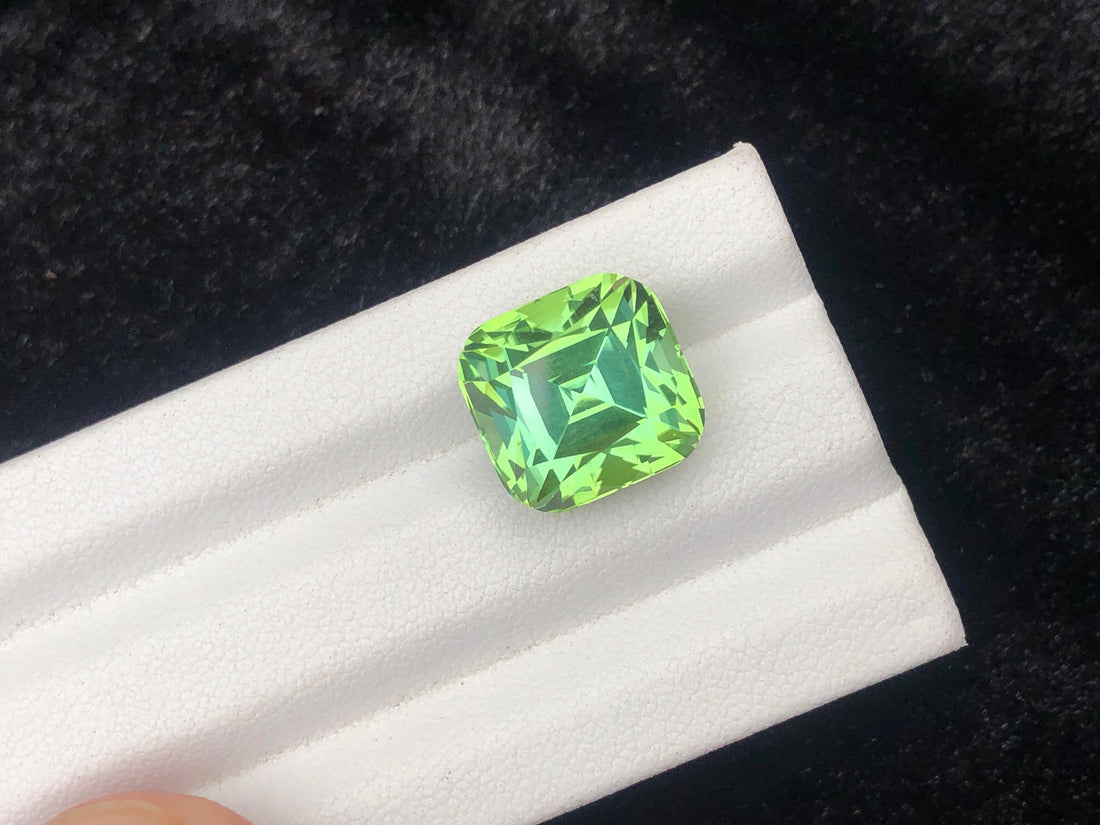
The Colour Revolution: Why Afghan Tourmalines Are Redefining 2025’s Luxury Jewellery
Share
In 2025, luxury jewellery is undergoing a quiet but powerful transformation. The old dominance of diamonds is being challenged—not just by lab‑grown alternatives, but by coloured gemstones that bring soul, story, and sustainable provenance to the forefront. Among them, tourmalines from Afghanistan have emerged as emblematic of this shift: striking in hue, rich in heritage, uniquely positioned to bridge tradition and tomorrow. At Lisbon Gem Exchange, we regard these gems not merely as exquisite material, but as vectors of change.
A New Luxury Landscape: Colour Ascends
The conventional grip of diamonds is loosening. According to Vogue Business, affluent younger buyers are gravitating toward pieces with meaning, provenance, and ethical transparency. These buyers prioritise story over sparkle. Meanwhile, reports like Rapaport’s Outlook for 2025 show continued strength in the coloured gemstone category, as demand for expressive stones rises. The Future Market Insights forecast projects the global coloured gemstone market to grow from USD 36 billion in 2025 to USD 68 billion by 2035, reflecting sustained interest and investment. What once was marginal is now central.
This reorientation is critical for any luxury jewellery business. Colour is no longer an accent—it is the language. And Afghan tourmalines speak it fluently.
Afghan Tourmalines: Geological Brilliance and Cultural Resonance
Not all coloured stones are equal. The tourmalines from Nuristan and Laghman provinces owe their remarkable palette to rare pegmatite systems rich in lithium, boron, and trace elements like manganese and iron. Under extreme pressure and temperature fluctuations, these systems yield crystals with vivid saturation, strong pleochroism, and compelling colour shifts.
The GIA has documented the unique internal structures and inclusion patterns of Afghan tourmalines, noting their clarity and intensity often challenge accepted grading norms. These stones rarely require heat treatment or irradiation to enhance colour—a rarity in high-end gemstones. What you see is largely what nature delivered.
But beyond mineralogy, these stones carry place and people. Artisanal mining, seasonal logistics, and local craftsmanship imbue each gem with context. At Lisbon Gem Exchange, we partner directly with mining communities to ensure that every stone delivered is ethically sourced and traceable.
Colour as Creative Disobedience
In contemporary design, the rules are bending—often breaking. Jewellery trends documented by The Jewellery Editor and Who What Wear show bold colour combinations, asymmetric settings, and organic textures sweeping the luxury stage. Perfect symmetry is being traded for personality; stones are no longer props—they’re protagonists.
Afghan tourmalines bring that creative potential. Their internal zoning, feathering, and optical depth invite bold settings: multi-stone gradients, open gallery cuts, mixed metal contrasts, and unstructured silhouettes. Designers working with Lisbon Gem Exchange are creating works where the gem dictates form, not vice versa.
Ethical Luxury: The Politics of Provenance
The modern buyer is not blind to origins. A 2022 McKinsey survey found that 79 % of Gen Z would pay more for ethically sourced jewellery. In a world rife with supply chain opacity and exploitative practices, provenance is power.
While synthetic gems claim lower environmental impact, their manufacture often requires high energy input and chemical processes. By contrast, responsibly sourced Afghan tourmalines support local communities, preserve traditional practices, and offer ecological value when mined with care.
Lisbon Gem Exchange emphasizes direct engagement, fair compensation, community reinvestment, and supply chain transparency. Every gem we offer carries not just colour, but dignity.
Investment Value Reclaimed
Natural coloured gemstones are becoming accepted as alternative assets. According to data from the Knight Frank Luxury Investment Index, rare gemstones delivered exceptional returns in volatile markets. Tourmalines, when backed by traceability and rarity, especially so.
Unlike synthetics whose value often collapses shortly after purchase, natural tourmalines from documented sources retain and sometimes appreciate. Lisbon Gem Exchange supports this by offering rigorous gem selection, clarity assessments, and storytelling that increases both market value and emotional value.
Disrupting Authenticity: How Digital Trust Reshapes Jewellery
In an era where images can be manipulated and fakes proliferate, digital trust is essential. Buyers expect more than pictures—they expect data, clarity, and interactive proof. Tools such as high-resolution video, spectral imaging, and blockchain-like provenance systems are no longer optional.
Emerging platforms like GlamTry demonstrate how augmented reality can offer realistic gemstone previews—allowing prospective buyers to appraise colour, depth, and cut remotely. Academic work (e.g. in arXiv) explores how smartphone-based spectroscopy might soon enable buyers to verify chemical signatures. Lisbon Gem Exchange is actively integrating such tools—virtual viewing, interactive dashboards, and origin mapping—to bring confidence to every click.
Design Economies of Rarity: How Scarcity Shapes Creativity
The power of scarcity in luxury is well known, but in the coloured gem world, design economy emerges—how rarity forces creativity. When supply is constrained, designers are pushed to innovate: combining smaller stones, exploring micro-pavé with colour accents, or creating sculptural settings that reveal rather than hide inclusions. This constraint-driven creativity is visible in niche exhibits where Afghani tourmaline accents are embedded in contemporary silversmith work or experimental resin-in-metal designs.
A case study: a 3-carat pale blue tourmaline, though not massive, became central to a ring design with negative space and open bezel—its visual impact amplified by its scarcity. Because Afghan tourmalines are limited by geography, logistics, and artisanal yield, designers working with Lisbon Gem Exchange must transform limitation into innovation. The result is jewellery that cannot be mass-produced, because every gem demands bespoke response—each setting a conversation between scarcity and form.
Colour, Courage, Context—The Future of Jewellery
The future of luxury jewellery is not dull symmetry. It will be radiant colour, rooted provenance, and creative defiance. Afghan tourmalines lead this redefinition, bridging geology and narrative, ethics and aesthetic. At Lisbon Gem Exchange, we don’t just sell gems—we facilitate a movement: jewellery that is bold, truthful, and profound.
If jewellery is the language of identity, colour is its dialect—and Afghan tourmalines speak the most compelling dialect of all.
Explore our curated selection, engage with our sourcing philosophy, and join a new generation of jewellery that wears meaning as boldly as it wears beauty.



